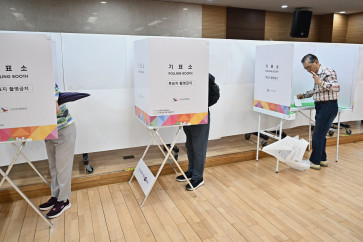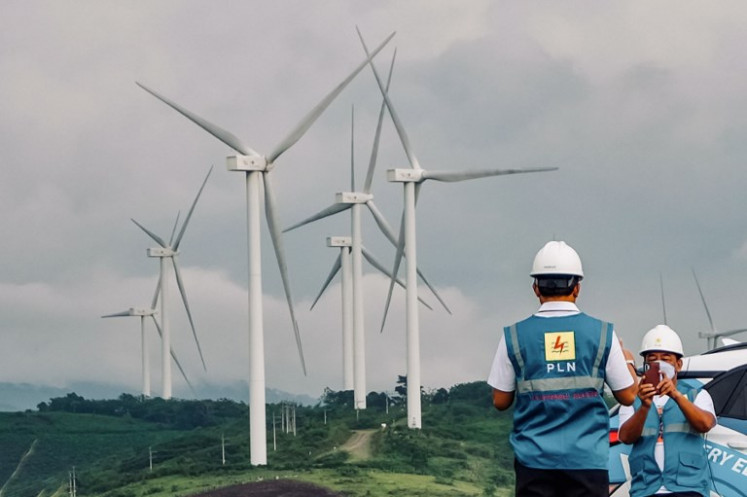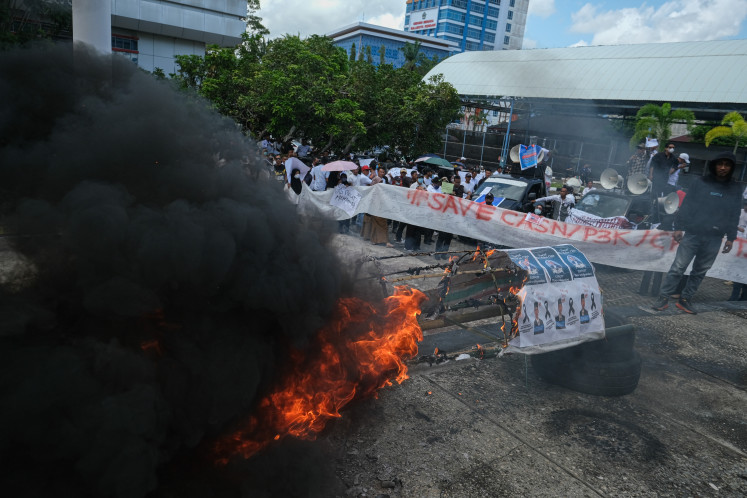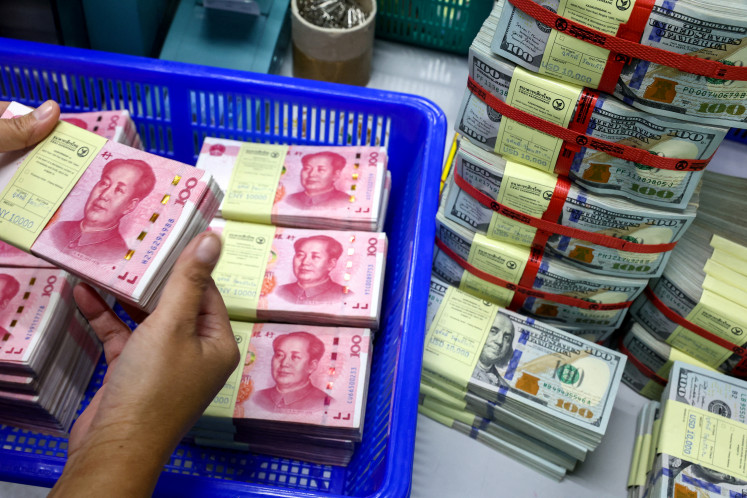Indonesia’s quest for a smart port: How far can it go?
To accelerate smart-port implementation, the government should give more opportunities to the private sector.
Change text size
Gift Premium Articles
to Anyone

S
mart port is a new mantra of our time that is often used interchangeably with other phrases like smart ocean and digitalization of sea. Indonesia, like many countries in the world, is also turning to the rhythm. Of course, the level of applicability among them varies. While there is no common definition of the concept, all embrace Artificial Intelligence (AI) and Internet of Thing (IoT) to operate.
In terms of geographic features, Indonesia is basically the best cultivating ground for the venture. But some challenges hinder the implementation of smart port here. The first problem concerns the involvement of multiple regulators.
By law, Indonesia’s port governance falls under the remit of the Transportation Ministry, and specifically the Directorate General of Sea Transportation, in which there is a Directorate of Port Management.
The ministry’s authority covers all spectrums of port, ranging from the government-owned facilities, state-owned enterprises to those operated by private entities. However, ferry ports are exempted and separately tackled by the Directorate General of Land Transportation.
For the implementation of the smart-port concept, there are other agencies that take the leading role, i.e. the Office of Coordinating Maritime Affairs and Investment Ministry and the Finance Ministry. As such, this situation has created a myriad of platforms that unfortunately do not connect with each other, requiring offline efforts to complete the job.
Currently the two biggest platforms in place are: Indonesian National Single Window (INSW) and Indonesia Portnet (Inaportnet).
The former is promoted by the Customs and Excise Directorate General under the Finance Ministry and dedicated to serve export-import documentation. The latter was founded by the Transportation Ministry, aiming at ship information (port of origin/destination, cargo manifest, etc.).
In 2020, the Office of Coordinating Maritime Affairs and Investment Minister in collaboration with the Finance Ministry launched the so-called national-logistics ecosystem. Officials involved in the project say it is neither a platform nor an integrator.
The second issue is the asymmetric capacity among domestic-port operators. Indonesia’s port architecture sees several different players operating in the industry.
Group 1 is the state-owned port operator (Pelindo), which manages no less than 100 ports across the archipelago. They are relatively advanced in terms of capital, knowledge and human resources compared to the others.
Group 2 consists of port operators under the aegis of the Transportation Ministry, amounting to more than 2,000 units nationwide. They are actually managing rudimentary facilities for supporting the movement of people and cargo.
Of course, some of them have been transformed into bustling harbors with quite significant revenues. Anggrek port in Gorontalo, for instance, even attracts attention from a local investor who is willing to invest Rp 1.3 trillion (US$87 million) for business expansion.
Bu this kind of port lacks resources (human resources, budget and so on) to implement the smart-port concept and requires support from the third party, mainly Pelindo.
Group 3 is private-port operators, whose permits are given by the Transportation Ministry. They can be subsidiaries of big companies in need of dedicated ports or terminal services to support their core businesses, or independent port operators.
Since they manage mostly the very basic general purposes of terminal/port the level of smart-port implementation is correspondingly low. Even their loading and unloading equipment is relatively obsolete.
The third issue is the absence of connection between local platforms and overseas partners. In the international fora there is a common platform called Tradelens, onto which shipping companies, port operators, trucking firms and other entities gather to share what they are doing. This cross-national connection allows for untroubled and traceable management of cargo across the globe. So far there are no Indonesia logistics players involved, but Pelindo is moving in that direction.
Those challenges could dash Indonesia’s quest for smart port. Perhaps one of the barriers to realize smart port is insufficient budget to build basic infrastructures (Internet connection, electricity). Private participation therefore should be an option. They may be local investors or foreign ones.
Indonesia marked its massive reforms in its port-business sector by merging four state-owned-port companies, which had operated for four decades, into a single entity last year. Thanks to the consolidation, the existing businesses (container, non-container and marine services), which previously were managed by separate port corporations, now come under one holding and will be clustered into several new subsidiaries.
Consequently, the holding is actually managing massive business lines, not just port operation but also property, hospital, IT solution, shipbuilding, port investment and many more. The application of smart port is more urgent than ever due to business expansion.
The enactment of the Job Creation Law two years ago could give a boost to Indonesia’s hope to implement smart port because the legislation relaxes many red tapes, and therefore will attract investors to come in. It should be noted, however, that the law does not specifically address the challenges standing between the country and the smart port.
Improved investment climate is key to pushing further the ventures of Indonesia’s port automation and digitalization of ocean, which are currently in the research or trial phases. These will need huge investments before being implemented.
To accelerate smart-port implementation, the government should give more opportunities to the private sector, including its state-owned enterprises, to invest in the port business. Within this context Pelindo can be the proper entity to take the initiative, thanks to its huge resources.
Full involvement of Pelindo in the country’s quest for smart port will bring it closer to the best practices adopted by many port operators around the world.
***
The writer is director of the National Maritime Institute (NAMARIN).









